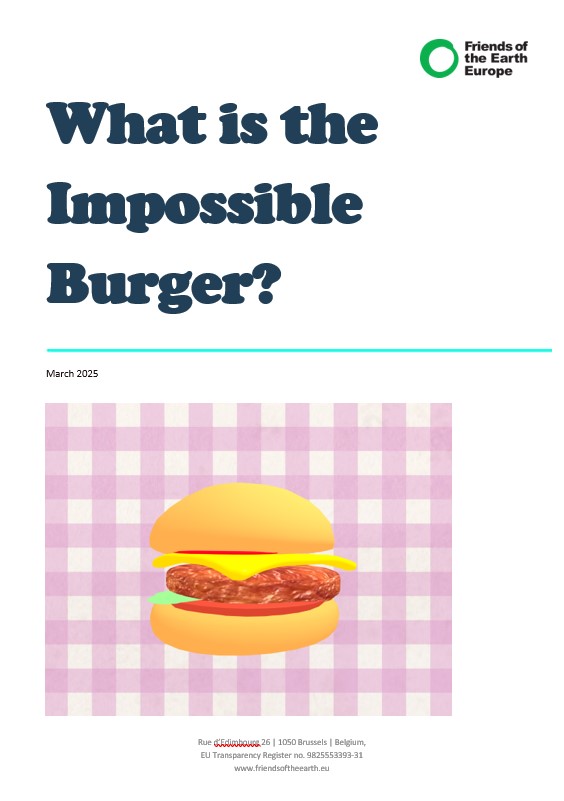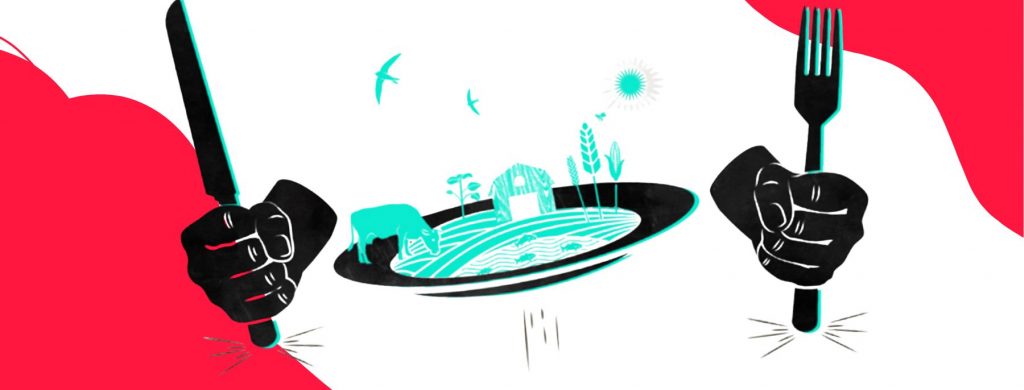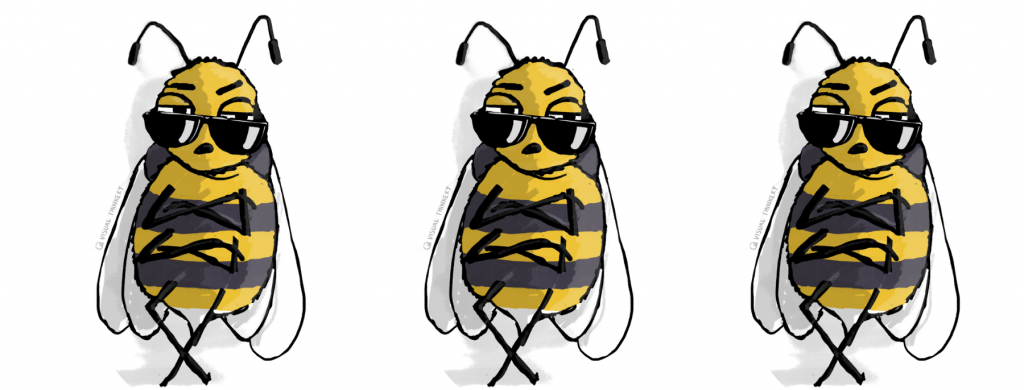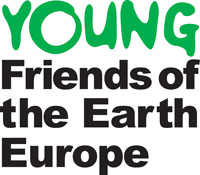
[This Q&A has been updated on 9 July 2025]

The Impossible Burger is a lab-made, genetically modified (GMO) meat substitute designed to look, taste, and “bleed” like real meat. Its key ingredient, “heme,” is produced using genetically modified yeast and soy. This is the first time for many years that a GMO product is being pushed for direct human consumption in the EU, raising serious safety and ethical concerns.
Who’s behind it?
Impossible Foods, a U.S. based company backed by big investors like Bill Gates and hedge funds, claims GMOs can “save civilisation.[1]” However, their product relies on untested genetic modifications. Despite raising nearly $2 billion[2], their safety claims are questionable.
Is it more environmentally and climate friendly than other diets?
Impossible claims its burger requires much less water and emits less greenhouse gases than a beef burger, but almost every other alternative to intensive beef production looks more sustainable. Thus, this claim doesn’t say much as researchers from Johns Hopkins University analysed [3]. The environmental impact of plant-based meats is in general much lower than beef for all sustainability metrics studied, looking at greenhouse-gas emissions, blue-water footprint, land use, pesticide use, water quality, and biodiversityimpacts.
Fake plant-based meats can have a substantially higher environmental impact when compared to peas and other pulses. Raychel Santo, senior researcher at Johns Hopkins said “we’re not limited to a choice between conventional meats and meat substitutes”. She argues we have other options, like less-processed legumes that have “even clearer health and environmental benefits.”[4]
Is it safe to eat?
No, and here’s why:
- Untested ingredients: The key ingredient, soy leghemoglobin (LegH Prep), has never been safely tested for human consumption.
- Animal studies show risks: Rats fed LegH Prep developed anemia, kidney issues, and blood clotting problems[5]. These findings were ignored.
- Unknown contaminants: 35% of LegH Prep is made up of unidentified, untested proteins from the GM yeast.
- Wrong strain used in testing: Safety data was based on an older yeast strain, not the one used in the final product.
- History repeats itself: Similar untested GMO products in the past, like L-tryptophan, caused severe illnesses and deaths[6].
These concerns were not assessed and considered when the European Food Safety Authority concluded that the Burger would not cause reasons for concerns.
How is it made?
The “heme” molecule, which makes the burger “bleed,” is produced by inserting soybean DNA into genetically modified yeast. This process created 46 unexpected proteins[7], none of which were fully tested for safety. Despite these red flags, the burger is already sold in the U.S. and is seeking EU approval.
What’s happening in the EU?
The Impossible Burger needs two EU approvals: one as a GM food and another as a food additive[8]. While the European Food Safety Authority (EFSA) claims it’s safe, they relied on flawed data and ignored animal study results. The European Commission announced it will soon put a proposal for authorisation to the vote [9]. National lawmakers will have to decide if they support the authorisation of the Impossible Burger or not – in a process that lacks transparency and public input. If they are unable to find a majority, the decision will need to be made by the European Commission[10].
What are the alternatives?
Friends of the Earth Europe campaigns against the expansion of industrial animal production for a more diversified animal-plant farming model of production. Instead of risky, ultra-processed GMO burgers, choose real, wholesome foods:
- Fresh, organic, and locally grown vegetables, nuts, seeds, and whole grains.
- Minimally processed plant-based proteins like tofu, tempeh, lentils, and chickpeas. [11]
- Support agroecological farming and policies that make healthy, sustainable food affordable for everyone.
Why say NO to the Impossible Burger?
The Impossible Burger is a gamble with our health and the environment. It’s untested, unproven, and unnecessary. Let’s choose real food over lab-made GMOs and support sustainable, healthy alternatives that benefit people and the planet.
Say NO to untested GMO burgers and YES to real, wholesome food
Check out our interactive infographic here or download the Q&A here.

[1] https://impossiblefoods.com/blog/how-gmos-can-save-civilization-and-probably-already-have
[2] https://tracxn.com/d/companies/impossible-foods/__BPXOmdjGDEI5Ot3ImXm-Gm9dTyu6Y48quOGr8ATLadA#about-the-company
[3] https://www.frontiersin.org/journals/sustainable-food-systems/articles/10.3389/fsufs.2020.00134/full
[4] https://www.thestar.com/news/insight/those-fake-meat-hamburgers-might-not-be-a-planet-saver-after-all/article_0fbf2e2e-42fb-5946-959a-92caff1d4264.html
[5]https://gmoscience.org/2019/06/25/rat-feeding-studies-suggest-the-impossible-burger-may-not-be-safe-to-eat/
[6] https://gmwatch.org/files/Comments-on-EFSA-opinions-on-soy-leghemoglobin-12-12-24b.pdf
[7] https://faq.impossiblefoods.com/hc/en-us/articles/360018937494
[8] EU regulation on GMO 1829/2003 and on food additive under regulation 1331/2008
[9] https://www.europarl.europa.eu/doceo/document/E-10-2025-001090-ASW_EN.html
[11] https://www.beuc.eu/sites/default/files/publications/BEUC-X-2025-001_Unwrapping_veggie_burgers.pdf







